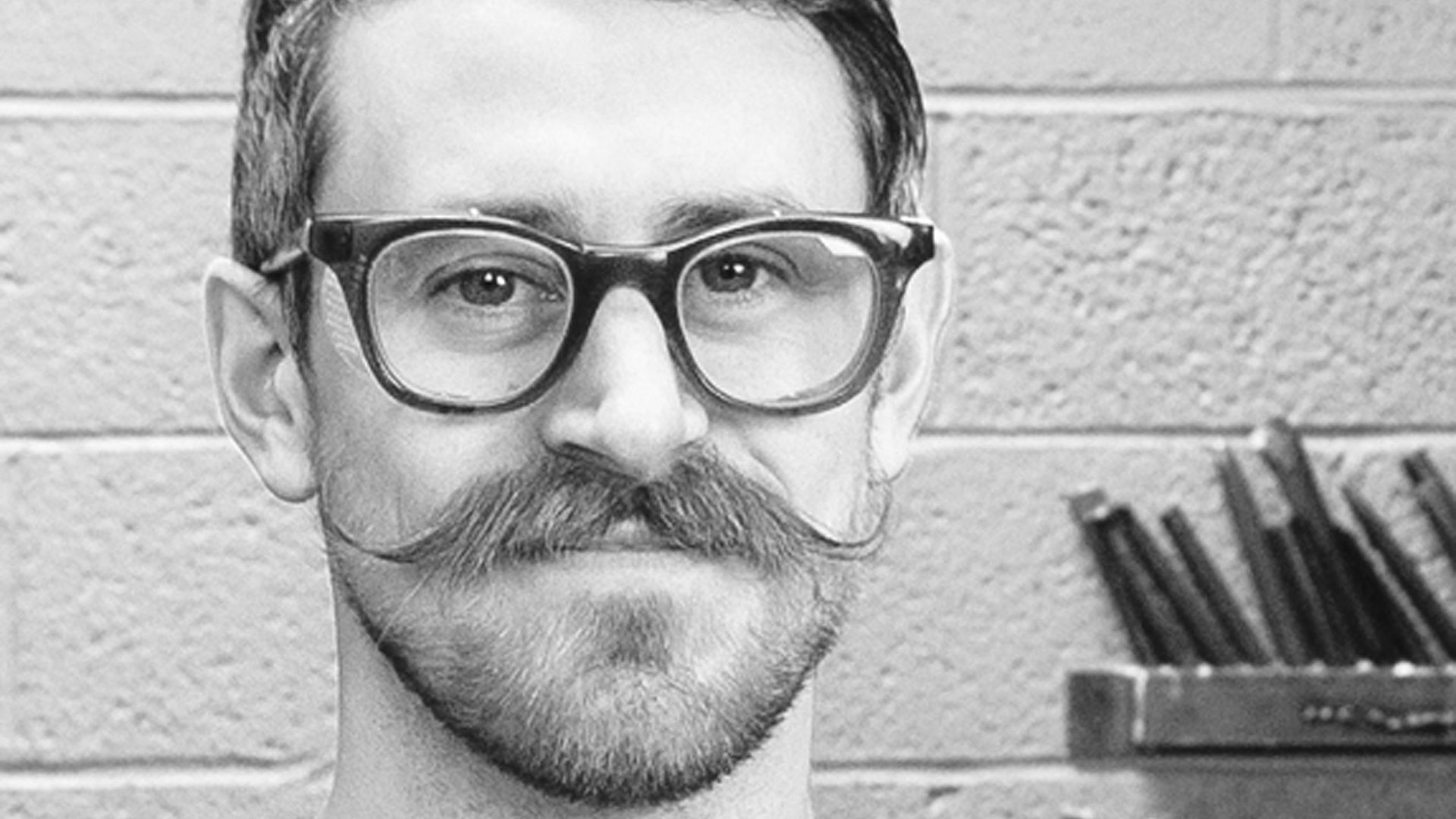Lauren Kalman: Coveted Objects
September 13–October 19, 2014
Cranbrook Art Museum, Bloomfield Hills, Michigan, USA
In Lauren Kalman’s works there is little restraint, unless of course we are talking about actual physical restraining devices. The works on show in her new exhibition, Coveted Objects, continue in the artist’s tradition of making beautiful objects and well-composed photographs that augment the body and depict sexually suggestive scenes that border on the grotesque. Coveted Objects is a selection of works from Kalman’s current body of work, But if the Crime is Beautiful…, and is the first exhibition in a new series of Detroit-based artists and Cranbrook alumni that Cranbrook Art Museum curator Laura Mott will roll out in the coming years.
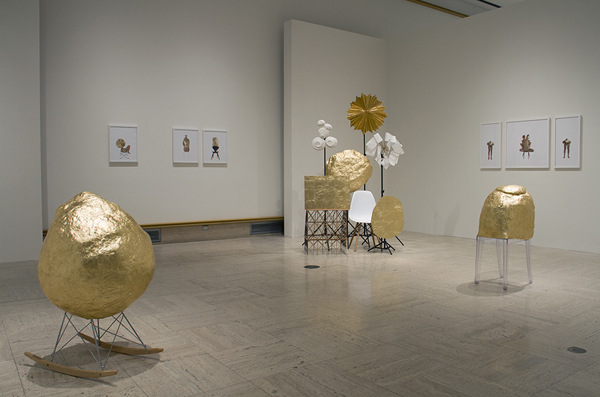
Kalman’s larger series, But if the Crime is Beautiful…, uses Adolf Loos’s 1910 lecture Ornament and Crime as a point of departure. In his lecture, Loos advocated for the elimination of ornament and decoration in art and architecture because of its wasteful inefficiency. Kalman takes this lecture as the guiding principle and catalyst for much modern design that would follow and begins her work tinkering with the archetypal language of modernist furniture—using it to stand in for other modernist values.
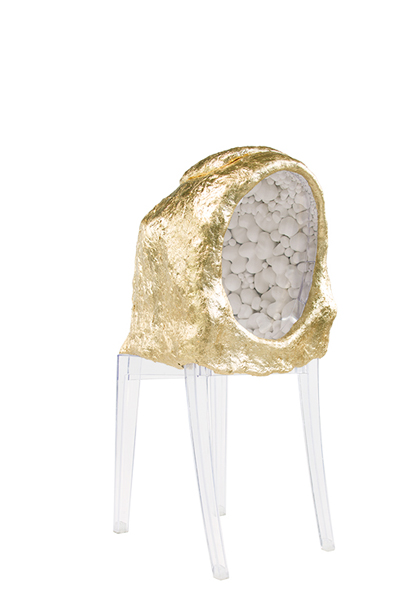
The sculptures and photographs in Coveted Objects are orchestrated to make subtle commentary on traditional gender roles, ethnocentricity, imperialism, and other now-outmoded modern social and ideological conventions. Kalman does this discreetly. In fact her social critique is easily overlooked in favor of the work’s beauty. Her ability to weave dissent into the objects she celebrates is one of the great strengths of this exhibition. For example, Sculpture (5) features a golden boulder astride a trussed Eames rocker base. It reminds one forcefully of the beauty and precariousness of Kyaiktiyo Pagoda (Golden Rock) in Mon State, Myanmar. Sculpture (5) blends the calm, orderly, and rational feeling of inevitable progress found in the work of Charles and Ray Eames with the spiritual, whimsical, and allegorical associations of the Asian pilgrimage site. Kalman gives similar treatment to Sculpture (1), a Philippe Starck Victoria Ghost Chair surmounted by a golden blob dome and golden pancake. The back of the chair is used as a window for the viewer to look into the cavity of the dome, which reveals organic white nodules that give one the distinct impression of looking into an ossuary (a bone crypt).
Coveted Objects is also populated with medium-size photographs that depict anonymous nude forms—ornamented with gold leaf, pearls, masks, halos, or roughly hewn bulbous golden spheres—in relationship to modernist furniture. The configurations of ornamented form and modern furniture are highly composed and aestheticized. Altared (4), a photo triptych, features male and female figures, bent at the waist, wearing golden spherical masks. They flank the central image of a woman, her back to the camera, straddling a man seated in the lotus position atop a Norman Cherner side chair.
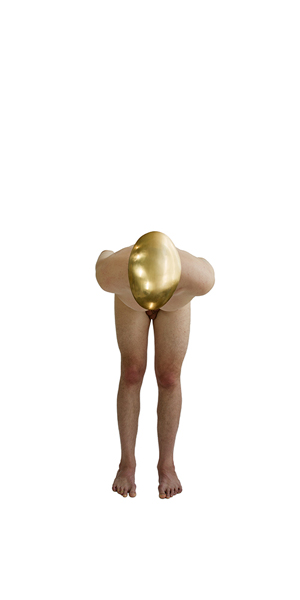
Coveted Objects references spirituality and religion almost as much as modern furniture. When allusions to faith are paired with graphic and overtly sexual content, the work reads like a celebration of tradition, ritual, and adornment, rather than a refutation. The embedded religious references that cast a devotional feeling over Coveted Objects are new territory for Kalman, whose subject matter has always been meticulously researched and teased apart through vigorous exploration of material and form. Kalman’s references to religion, tradition, and iconography seem to stray somewhat from her tightly controlled methodology as the religious subject matter seeps ethereally into Coveted Objects, rather than speaking the authoritative form language of previous bodies of work. This creates yet another tension, this time between the forcefully conceptual and the voluntarily intuitive.
Adding a layer of complexity to Kalman’s ministrations is the venue of the exhibition. Cranbrook Art Museum houses one of the country’s best collections of 20th-century design. Cranbrook Academy of Art also claims Charles and Ray Eames among its distinguished alumni, a point certainly not lost in Coveted Objects, which features no less than five altered Eames designs represented either in photographs or sculptures. It is as if the furniture were a studious teenager sent to live with an eccentric aunt in California for the summer. Kalman returns the furniture—adorned, sexualized, and barely recognizable—to its home, leaving family, friends, and neighbors wondering just what the hell happened in the intervening time away. This is perhaps what curator Laura Mott was hoping for when she invited Kalman to kick off the new exhibition series.
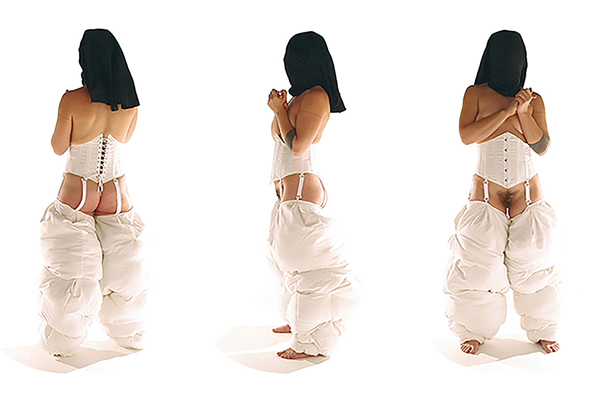
But if the Crime is Beautiful… is a sensitive if somewhat lurid progression from Kalman’s previous bodies of work, Spectacular (2011–2013) and Blooms, Efflorescence, and Other Dermatological Embellishments (2009). With each new body of work, Kalman’s subject matter has continued to shift away from explicit body adornment, such as piercing and gold leaf, to more subtle and nuanced explorations and sculptural interventions. Where Blooms found traction in exploring the language of dermal conditions, and Spectacular focused on body abnormalities and appendages, But if the Crime is Beautiful… abstracts the body, obfuscating the figure as the subject, instead using it as a prop for the exploration of clean, banal, modern design—in this case through juxtaposition. It is also true that as Kalman’s work has progressed, there has consistently been more explicit sexual content, though it has never been gratuitous. If anything, the sexuality in Coveted Objects forces the viewer to regard the body as a medium itself, something often lost in the field as jewelry makers try to infuse objects with content rather than focusing on activating the body as an erogenous site.
The specter of animosity between ornament and modern design, raised by Loos more than 100 years ago, creates a psychological tension in Coveted Objects. Clearly the exhibition celebrates both ornament and the spare furniture that seeks to avoid it. Kalman creates wonderfully composed images that contrast simplicity and complexity, decoration and banality. Kalman’s insistence on honoring two opposing ideologies is of course a hallmark of postmodernism. In fact, her fluid movement through sculptural, photographic, craft, and time-based media exhibits all the tendencies of an artist working in a post-medium climate—one that regards medium-specificity agnostically.
This begs the question, what keeps Kalman relevant to the critical discourse of art jewelry? Kalman’s stunningly sensitive approach to material—the hallmark of a good artist—is as relevant as her endorsement of, and participation in, the craft world. She is represented by Sienna Gallery (a gallery known for jewelry), she participates in exhibitions sponsored by craft museums, and she chooses to adopt themes of interest to the critical discourse of craft. Kalman clearly chooses to participate in the microcosm, even though her work unmistakably transcends its boundaries. And so, to be frank, although there is very little in Coveted Objects that relates directly to jewelry, Kalman’s masterful orchestration of related themes, her interrogative use of the body, and her exploration of ornamentation make the exhibition a topic of enriching discussion for anyone interested in jewelry.
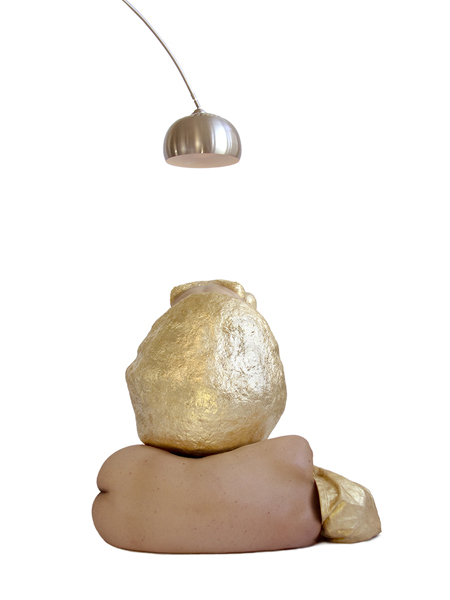
INDEX IMAGE: Lauren Kalman, Sculpture (5), 2014, foam, burlap, papier-mâché, faux gold leaf, LED, battery, Eames chair, 914.4 x 609.6 x 609.6 mm, photo: artist
